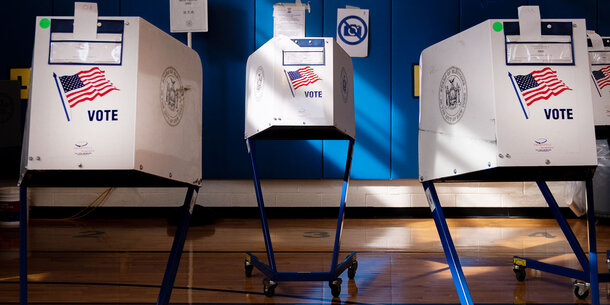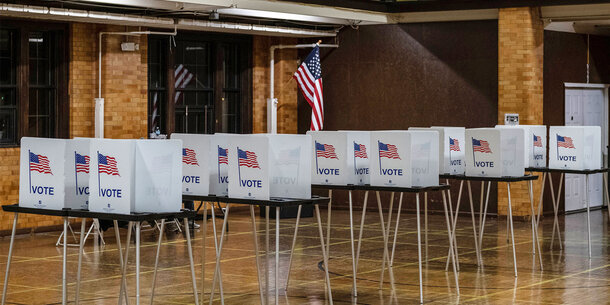This piece was first published by Univision.
This November, the midterm elections will take place under additional stress due to the spread of the Big Lie of a stolen 2020 election and plunging voter trust in elections. To make matters worse, a flood of new restrictive voting laws passed since 2020, fueled by those same baseless claims of a rigged election, has transformed the nation’s electoral system and, in many cases, infused more doubts and confusion.
All that turmoil is creating space for dangerous misinformation to thrive especially for Latino voters, who represent a growing political force. Latino voters face exceptionally high risks from election misinformation because new voters and new citizens grapple with distinct challenges in navigating the thicket of misinformation on elections. Latinos are the largest share of the nation’s newly registered voters and the target for restrictive laws that aim to curb their rising voting power.
When the demand for information eclipses its supply, the gaps that follow can enable misinformation to take root and flourish. Several states expanded access to voting after 2020, prompting calls for voter education on the changes. And an unprecedented wave of new laws that restrict voting access has created special risks. Misguided and malign actors may misstate or invent limits on voting to complicate the process or suppress the vote. In turn, the laws fuel a disinformation feedback loop around the Big Lie by confirming or creating unjustified concerns on election integrity, and unusual on-the-ground voting conditions can allow unchecked rumors to circulate.
Take Texas, for instance. A sweeping new voting law curtails election officials’ ability to give voters critical information about mail voting. At the same time, the restrictive law adds burdensome and confusing new ID requirements for mail voting. Together, those facets of the law contributed to enormous numbers of slip-ups by voters and election officials in the state’s 2022 primary in March. Rejection rates for mail ballot applications and mail ballots skyrocketed—the latter rate surged by more than 1,100 percent from the 2020 general election. As a result, many eligible voters who cast ballots did not have their voices heard in the election.
But as a new report by the Brennan Center for Justice at NYU Law and First Draft highlights, misinformation can be mitigated. In the state with the nation’s largest Latino population, California, a recent election shows how robust voter education can reduce the risks from election misinformation. California’s 2021 recall election for governor presented numerous new conditions for voters—from the unusual election itself to the challenging ballot format. In Los Angeles County, election officials acted proactively to stem the tide of misinformation by running a wide-ranging education campaign, maintaining an online tip line and telephone support, and monitoring social media for rumors and falsehoods. Officials said that these actions helped fix problems in real time and nip some misinformation in the bud.
Troubling changes this year make the task to guard against misinformation tougher. Election officials—who rank among our democracy’s top guardians—traditionally are the most credible source for information about elections. But since 2020, large numbers of election officials have left or plan to depart their posts, draining offices of experience. A small number of election officials have invited election deniers to access voting systems, violating the public’s trust and undermining the integrity of the entire system. Across the nation, dozens of candidates for offices with power over elections have embraced false election claims.
The threats are dire. But we can and must curb the peril. To reduce misinformation, election officials should run timely campaigns to educate voters, maintain rumor control pages where feasible, and make connections with trusted messengers to reach communities. Journalists should report election stories with context and cover confusing topics ahead of Election Day. Social media companies should amplify accurate information about elections and use sound tools to slow the spread of misinformation. And the public should learn about voting changes, study strategies to identify misinformation, and seek context for outlandish or emotive claims. The time to act is now.






